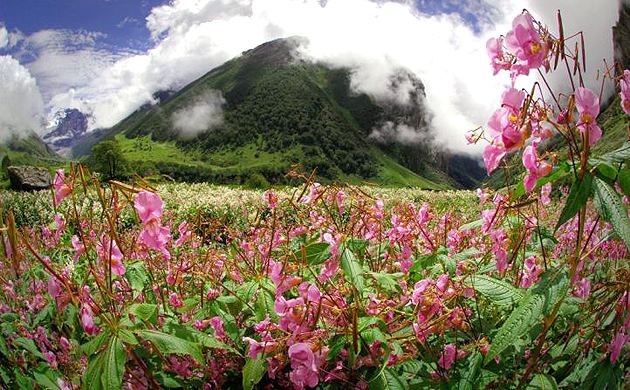These are some of the most spectacular wilderness areas in the Himalayas. Dominated by the peak of Nanda Devi, which rises to over 7,800 m, Nanda Devi National Park has remained more or less intact because of its inaccessibility. It is the habitat of several endangered mammals, especially the snow leopard, Himalayan musk deer and bharal. The Valley of Flowers National Park is renowned for its meadows of endemic alpine flowers and outstanding natural beauty, and is also home to rare and endangered animals, including the Asiatic black bear, snow leopard, brown bear and blue sheep. Together they encompass a unique transition zone between the mountain ranges of the Zanskar and Great Himalaya, praised by mountaineers and botanists for over a century and in Hindu mythology for much longer.
Nandadevi National Park
Dwelling for endangered species of mammals such as bharal, snow leopard and the Himalayan musk deer, Nandadevi National Park is the least exploited park because of its inaccessibility. This Park is dominated by the Nandadevi peak (the second largest peak in India) that stands regally to a height of 7,800m. Hindus visit this place once in twelve years to worship the Trishul that is placed here.
 Nandadevi National Park is located in the greater Himalayan ranges of the Chamoli district within the Gharwal division in the State of Uttaranchal. Entrance to the Park is from the Lata village, 23 km from Joshimath. The west side of this park is unreachable because of a ravine and the other three sides are covered by the mountain peaks.
Nandadevi National Park is located in the greater Himalayan ranges of the Chamoli district within the Gharwal division in the State of Uttaranchal. Entrance to the Park is from the Lata village, 23 km from Joshimath. The west side of this park is unreachable because of a ravine and the other three sides are covered by the mountain peaks.


Dwelling for endangered species of mammals such as bharal, snow leopard and the Himalayan musk deer, Nandadevi National Park is the least exploited park because of its inaccessibility. This Park is dominated by the Nandadevi peak (the second largest peak in India) that stands regally to a height of 7,800m. Hindus visit this place once in twelve years to worship the Trishul that is placed here.



0 comments:
Post a Comment